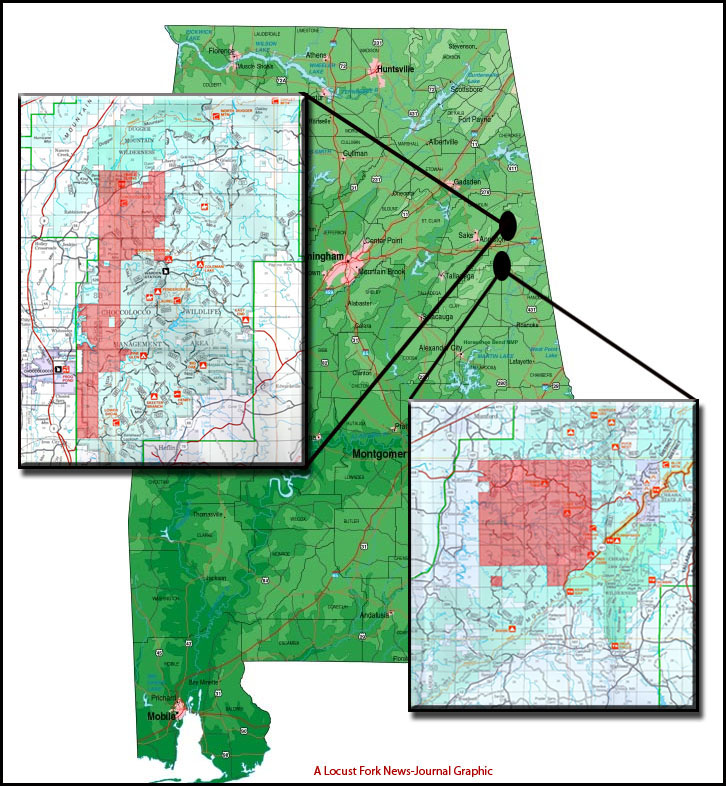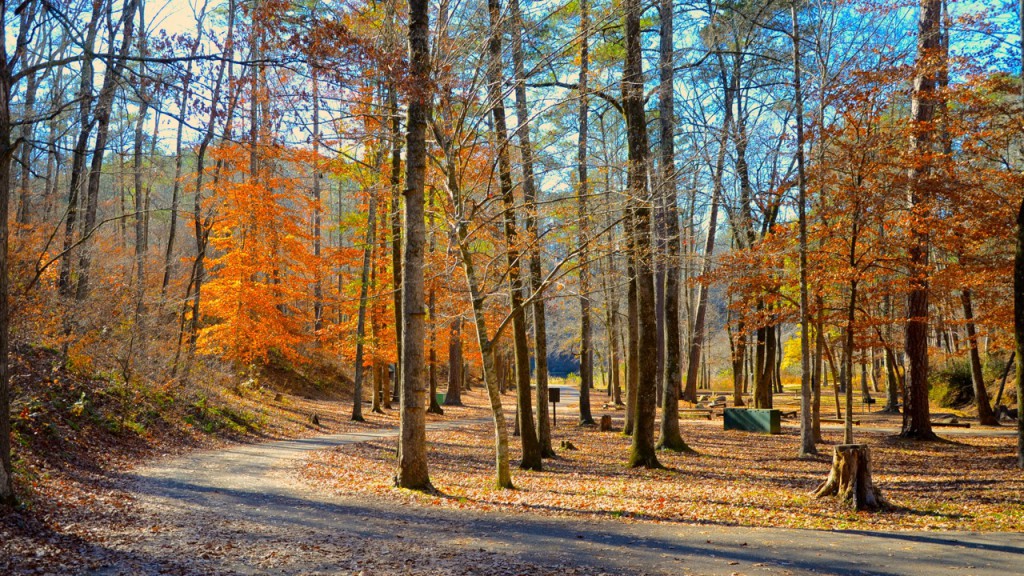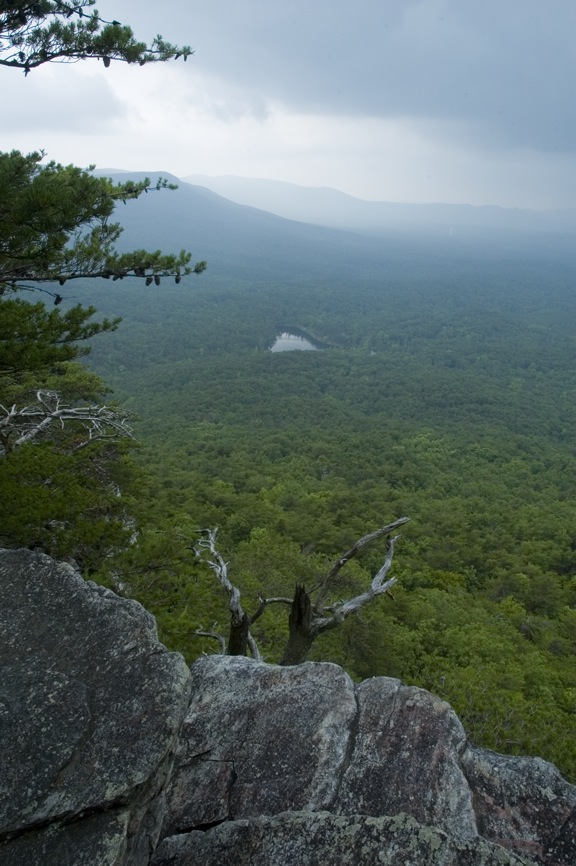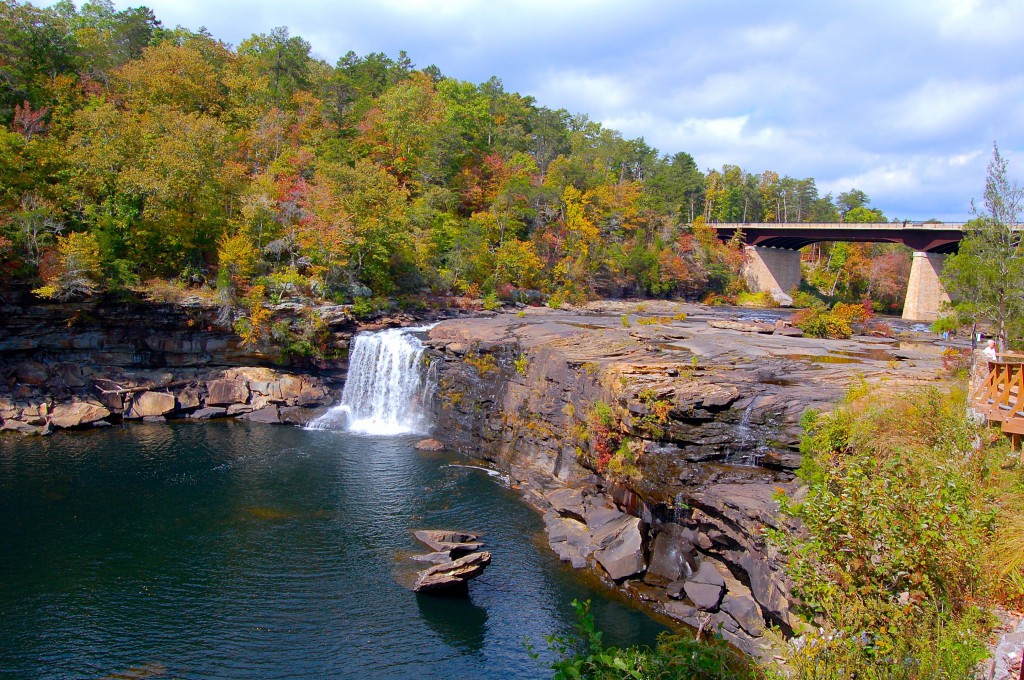Editors Note: The nightmares of natural gas fracking being documented all over America are coming soon to Alabama, brought to you by Halliburton and its real estate agent, the federal Bureau of Land Management — unless enough people get together and lodge enough political protests now to stop it.
The Bureau of Land Management and the U.S. Forest Service are hosting a public, open meeting in Montgomery April 25. If the place is not surrounded and overwhelmed with public opposition, the lease sale could very well move forward and set up a scenario that could not only destroy forever the beauty and the environment of a national forest. It could strike a major blow to the economy of the area, especially tourism to places like Mt. Cheaha State Park, DeSoto State Park and Little River Canyon.
The state parks are already under siege by the Republicans running Alabama now who want to cut the budget and transfer a percentage of their money to the general fund. Inside sources running state parks, who talked about the situation off the record, say employees who are already under paid are worried about keeping their jobs.
Over the past several years, we have been camping all over the Talladega National Forest and documenting the natural wonders of the place with stories, photos and video. For the past 10 months, since the lease sale was announced last June and then squashed temporarily, I have been working on this investigation of what fracking could mean for the area.
We understand that the Obama administration is gung-ho on drilling for natural gas wherever feasible, while at the same time proclaiming publicly the need to tackle global warming and climate change as a major problem in the national interest. At least the administration has set up a special science advisory board to review all the research on fracking to investigate the potential health and environmental risks, something that would never have been done with a Republican in the White House.
Our research indicates that drilling in the national forest is NOT in the national, state or local interest and should be opposed with all vigor by the citizenry. This is a continuation of an ongoing series on the subject.
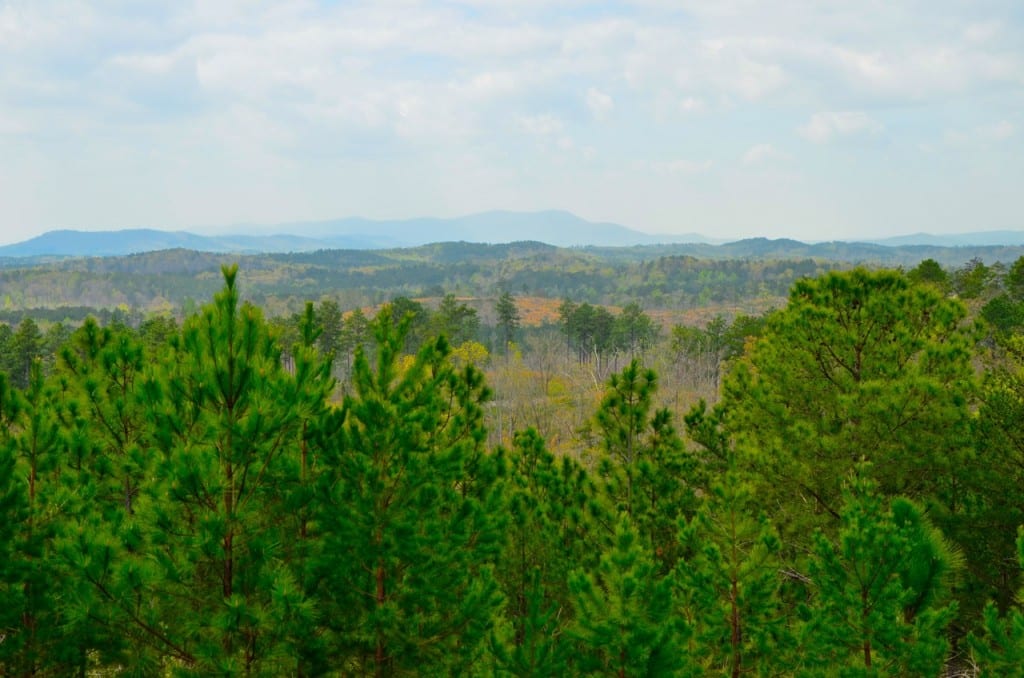
A Future Fracking Zone? Looking out over the national forest from the Talladega Scenic Drive toward Mt. Cheaha, the highest peak in Alabama’s Appalachian Mountains off in the distance (click on the images for a larger view): Glynn Wilson
Watch the video…
Alabama Residents Oppose Fracking That Could Destroy the Public’s National Forest
By Glynn Wilson
HEFLIN, Ala. — Greg Flanders, a resident of Cleburne County for the past 40 years and a native of northwest Georgia, is by all accounts a normal American male in his golden years. He does not look or act like a radical environmentalist. He’s a well-groomed older gentleman who is retired after a career of teaching and running overseas schools.
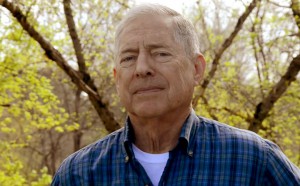
Cleburne County resident Greg Flanders worries about the plan for fracking in the Talladega National Forest
Mr. Flanders just likes living out in the country surrounded by a national forest where he can go for long walks in the woods, camp out at night by a wood fire and put a canoe in a clean freshwater lake, river or stream and paddle until his heart rests content. But the wrinkles on his face show his stress and concern when he talks about the plan to allow fracking for natural gas on public land that could potentially destroy the place he lives and his way of life.
“Word is around here that the Bureau of Land Management wants to lease a third of our Talladega National Forest for oil and gas exploration,” Mr. Flanders says. “I don’t think there’s anyone who has not heard of hydraulic fracking. But if they do that as they’ve proposed, that’s up to 400 sites, four to five acre gravel pads per site with pipelines and all that. They will just destroy the beauty of our forest even if everything goes as well as they claim it sometimes does (and does not contaminate the surface water lakes and streams and the ground water). They will still have ruined a third of the national forest. They are not going to let us on their pads.”
“It’s just a playground, a gorgeous place,” he said. “That would just destroy the beauty of it, not to mention the endangered species and the water.”
More than 70,000 residents of the Annistan-Oxford area get their drinking water from watersheds in and around the national forest, and a number of them fish in the lakes, rivers and streams and hunt in the woods. Fracking could result in massive fish kills and further contaminate the fish even downstream all the way to Logan Martin Lake, which is already so polluted with Alabama Power’s PCBs that there are advisories warning people not to eat the fish. But some poor people eat them anyway. This would further put their health at risk.
Anniston has already been declared one of the worst 10 places to live in the United States due to the pollution from Monsanto and Alabama power.
“Is it worth ruining our water supply?” Mr. Flanders asks.
There’s also the tourism industry to consider, one of the main “alternative uses” allowed in the forest according to federal policy and the Dick Cheney Forest Management Plan of 2004, which allows for extracting oil and gas, even though fracking was not a prominent issue in those days.
“Fracking was an unknown issue in 2004,” according to environmental attorney Ray Vaughn of Wild Law, who fought off another plan to drill in Alabama’s national forests in 2009 by threatening to sue.
“All plans nationwide are silent on it and thus ‘allow’ it,” he said. “Law requires that they do new analysis for new issues such as fracking. But more so, they broke the law repeatedly in the plan (and nearly every plan nationwide) when they did not follow NEPA requirements in the decision on how much land to allow oil and gas exploration upon.”
He’s talking about the National Environmental Policy Act, which requires environmental assessments and environmental impact statements, which have not even been proposed for the plan underway in Alabama.
Vaughn said the plan is “legally a sitting duck,” if the courts were honest, no guarantee these days considering the state courts in Alabama have been converted into rubber stamp boards for corporate malfeasance over the past 20 years, and the federal courts in the South are all mostly run by Republican judges with lifetime appointments. So turning to them for help may not do any good.
The Southern Environmental Law Center has taken up the legal challenge as a result of our questioning on behalf of WildSouth and the Natural Resources Defense Council by filing an intent to sue last June. Their filing is largely based on precedents set by Vaughn’s baseline work back when, he said.
A federal judge in California recently ruled against fracking leases because there was no formal environmental impact study and statement as required by law.
That gives residents here some hope that the same thing could happen here, except that the courts in the South are far more conservative and pro-big business, even the federal courts.
The Halliburton Loophole
One big problem the people should understand is that if fracking is allowed, it is exempt from the law after the fact for any environmental or property damage it causes.
Former CEO of Halliburton and Vice President under George W. Bush, Dick Cheney had a law rammed through Congress in 2005 exempting fracking operations from legal liability in the case of health-damaging pollution as a byproduct of their operations.
At Cheney’s urging, the Republican Congress created the so-called “Halliburton loophole” or exemption to clean water protections under federal law to prevent the EPA from regulating this process, despite serious concerns raised about the chemicals used and numerous instances of contaminated drinking water all over the country. Cheney’s “energy task force” had touted the benefits of “hydrofracking” as far back as 2001, even going so far as to redact references to human health hazards in government reports where Halliburton was mentioned specifically.
Halliburton is estimated to bring in about $1.5 billion a year from its energy operations, which rely substantially on its hydrofracking business, according to financial disclosure reports. Cheney’s profits from Halliburton became a campaign issue at one point in 2004, but it was determined he was paid “from previous earnings” after being vice president and overseeing the Council on Competitiveness. While it was a clear conflict of interest, the Republicans in Congress did nothing and let it slide. Halliburton is still one of two main companies doing most of the fracking in the U.S., the other being a French outfit operating out of Bush’s home state of Texas, Schuepbach Energy LLC.
So if they come to Alabama and screw things up, they can’t even be sued for the damage under the law as it stands. That law could be changed, legal experts say, if enough tea party Republicans are booted from Congress in 2014 and replaced by more environmentally sympathetic Democrats.
A Movement to Change the Law
There is already a movement afoot to change the law.
U.S. Representatives Diana DeGette, John Salazar and Maurice Hinchey and Senators Robert P. Casey Jr. and Chuck Schumer introduced the Fracking Responsibility and Awareness of Chemicals Act, also known as the FRAC Act, in 2009. But the Republicans in Congress have so far blocked any effort to bring this law to the floor for debate. The proposal is aimed at closing the ‘Halliburton loophole’ and requiring the oil and gas industry to disclose the chemicals used in drilling projects, which can contaminate ground water and drinking water. Now, the chemical stew they use is considered to be a proprietary corporate secret like the secret ingredient in barbecue sauce.
In late October 2009 the House of Representatives agreed to include a statement in the Interior and Environment Appropriations bill and report for fiscal year 2010 demanding that the EPA reassess the impact of fracking on water supplies. In response, the EPA announced in March 2010 that it would lead a $1.9 million comprehensive, peer-reviewed study on the impacts hydrofracking would have on water quality and public health. The results were due out in late 2012, but the deadline has been extended, and the Obama administration has now appointed a special advisory panel of experts to take a close look at the issue.
Although the Bush-Cheney Energy Policy Act of 2005 exempted hydraulic fracturing from the Safe Drinking Water Act and the Dick Cheney Forest Management Plan for national forests in Alabama allowed for oil and gas exploration as one of the “multiple uses” outlined in the plan, there is one small exception that provides a legal leg for a lawsuit to stand on: The use of diesel fuel.
The law excludes underground injection of fluids from being regulated by EPA or the courts — except when diesel is used. A congressional investigation has found that oil and gas companies used tens of millions of gallons of diesel fuel in fracking operations between 2005 and 2009, thus violating the Safe Drinking Water Act. Diesel fuel contains a number of toxic constituents including benzene, toluene, ethylbenzene and xylene, which have been linked to cancer and other health problems.
In a letter to EPA Administrator Lisa Jackson, the congressional committee noted that between 2005 and 2009, “oil and gas service companies injected 32.2 million gallons of diesel fuel or hydraulic fracturing fluids containing diesel fuel in wells in 19 states,” and none of the companies sought or received permits for that. “This appears to be a violation of the Safe Drinking Water Act,” the letter said. “It also means that the companies injecting diesel fuel have not performed the environmental reviews required by the law.”
Because the necessary environmental reviews were circumvented, however, the companies managed to avoid having to provide data on whether they had used diesel in fracking operations in or near underground sources of drinking water. This is no way to run a government in the public interest, but that’s the way the Republicans like it: “That government is best which governs least.”
Three Watersheds At Risk
According to expert biologists Francine Hutchinson and her husband Bruce, who live right next to the national forest on the northeast edge of the fracking zone, the fracking should not be allowed for many reasons. But chief among them is the potential to contaminate three major watersheds. (See attached map).
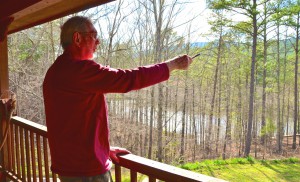
Botanist Bruce Hutchinson looks out on the Talladega National Forest from his deck (click on the images for a larger view)
On the southeast, Cane Creek feeds into the Tallapoosa River. On the northeast, Terrapin Creek drains into Weiss Lake, which connects to the Coosa River. On the west, Choccolocco Creek, the largest fresh watershed in the area, feeds all of Anniston and Oxford and drains down into the Coosa River.
Bruce Hutchinson is a retired software engineer for the federal government, as well as a hiker, hunter, botanist and forest advocate. Francine is college and field-trained botanist who researched the flora of Dugger Mountain for her masters thesis at Jacksonville State University and taught science and biology for 20 years. She is now the assistant curator for the Jacksonville State Herbarium. They were instrumental in getting law passed that led to the creation of the Dugger Mountain Wilderness area, which borders the fracking zone now on its southern edge.
In addition, they say, White Plains elementary and middle school is less than half a mile from the border of the fracking zone and could put the children at risk.
There are also a number of small plots of private property scattered around the national forest, and considering the number of cases of fracking operations side-drilling under property not covered by a lease contract, those private property owners could be robbed of their mineral rights without compensation when the company side-drills under their land — at the same time potentially contaminating their well water. There are hundreds of cases of this around the country and numerous lawsuits underway for this very thing, although it is unclear if the courts will be of any help considering the Halliburton loophole.
The company could solicit the drilling rights from private property owners, but there is no indication that is going on around the Talladega National Forest at this time. It is cheaper to obtain the rights to develop public property and drill under surrounding land without permission. Federal leases are only going for $2 to $5 an acre. Do the math. If Halliburton only pays $5 an acre to lease the mineral rights to 43,000 acres in the national forest, that’s only $215,000 for the federal treasury, not even a drop in the budget that is the national deficit.
Mr. Flanders, the Hutchinsons and many others wonder if it is really worth that, considering the potential damage and low prospects for finding the mother load of methane gas in this suspect terrain (see below)?
When you consider how fracking works and the lay of the land in the Talladega National Forest, what you find is that there are an estimated 400 potential drilling sites on most every road-accessable ridge top all over the forest where drilling pad operations could be established, some as large as four or five acres with massive trucks and other equipment that would need to cut down more trees to widen access roads.
“The higher the ridge top the more contaminated runoff into the streams below,” Bruce Hutchinson said as he pointed all this out on a map at his home on the edge of the forest.

Biologist Francine Hutchinson shows concern for the forest where she makes her home and career (click on the images for a larger view)
The corporations that conduct fracking must construct holding ponds for the waste generated, but even that is subject to leakage and runoff. And even if polluted water downstream from a fracking zone were treated in a public water treatment plant, like the one at Anniston, those systems are not designed to handle all the chemicals and cannot cleanup the water to make it safe to use again.
“We don’t have the infrastructure, we don’t have the regulations, we are not prepared for this in any shape, form or fashion,” Mr. Flanders said. “Look around. Alabama is just behind folks. That’s why they want to drill here. It’s easy. It’s cheap. They are getting a bargain from the public land and only having to deal with the Bureau of Land Management, which as best I can tell is on their side and not the peoples’ side.”
Plus the media is weak on covering these sorts of issues in this state and doesn’t often inform and educate the public about the risks. And even experts in other federal agencies like the U.S. Forest Service and the Fish and Wildlife Service who would normally be involved in the decision making process have been ordered not to talk, Flanders said.
“I’ve known some of these people for years. They are not for it,” Mr. Flanders said, “but they’ve been ordered not to talk.”
But he said it’s not going to be the science that brings a halt to fracking.
“It’s not going to be the endangered species or the threat to the environment. It’s not going to be the threat to our water or all of the logic,” he said. “It’s going to be enough political pressure to convince the powers that be to stand up to the oil and gas industry. If enough voters say this is really important, it’s our kids and our grandkids that your screwing, if you don’t stop this you are not going to have a job. It’s politics.”
A Poor Place to Drill
Alabama state geologist Nick Tew says the proposed fracking area has low potential and is a poor place to drill.
Tew works for the Alabama Oil and Gas Board, which regulates the oil and gas industry in the state. He has written and testified publicly that the chances are low that natural gas in any significant quantities will be discovered underneath the road-accessible ridge tops in the national forest in Calhoun and Cleburne Counties.
“The geology of the area is very complex, with significant folding and faulting of the rock bodies,” Tew wrote in an email and said at a town hall meeting in Jacksonville when the issue first came up. “Owing to the general lack of data and drilling experience, exploration activity in this area would be highly speculative in nature.”
For Flanders, that testimony should be the end of the story.
“So we say okay, don’t drill here,” Mr. Flanders said. “But our only hope is for everyone to contact their representatives and the administration, including the president, and let them know we are the voters and we don’t want it. We don’t have the money of the oil and gas industry. But we’ve got the votes and I think public opinion is unquestionably on the side of ‘leave our national forest alone’.”
Even if enough gas were discovered to drill, companies may not decide to drill at all because of the low price of natural gas, which is only about $2 per 1,000 cubic feet. But that should come as cold comfort to the residents and businesses in the area. Once the leases are sold, the companies will have the right to explore the forest at will.
While one local newspaper claimed in the headlines that fracking could lead to an “economic boom” in the area, that assertion is not backed up by the facts. Fracking crews are small and non-union, so there are not many high paying jobs created by fracking, and none of them are local. Flanders and others worry that the crews will just come in from Wyoming or other states, destroy the forest, and leave.
Besides, Mr. Flanders says, “There are plenty of other places to drill. It’s the public’s land and the public has said we don’t want it.”
One petition was signed by more than 15,000 people against it, and local Democrats and Republicans have voiced concerns about it.
But the meeting planned for April 25 in Montgomery will not be a town hall style public hearing where the federal government is required to take comments from the public and legally respond to them. It is an “informational” meeting in the middle of nowhere far from the area where fracking is proposed surrounded by a golf course, and it will take place on a weekday when people have to work. The agency’s plan is to try to sell the public on the idea, Flanders said.
“They don’t want our input,” he said. “We’ve got to get organized enough to say ‘no more’ raping of the public land for the profit of the oil and gas industry.”
Fracking Problems in Other States
While the corporations and the oil and gas lobby claim fracking is safe, the people of Alabama should be aware of problems discovered in other states.
In Pennsylvania on November 9, 2009, the owner of 480 acres of land in southwest Pennsylvania claimed Atlas Energy Inc. ruined his land with toxic chemicals used in or released there by hydraulic fracturing, and he also claimed to find seven potentially carcinogenic chemicals above permissible levels set by the EPA. He performed tests on his well water a year before drilling began and said the water conditions were “perfect.” After the drilling began, water tests found arsenic at 2,600 times acceptable levels, benzene at 44 times above limits and naphthalene five times the federal standard. He has decided to sue Atlas Energy Inc. for negligence and is seeking an injunction against further drilling and financial damages.
Later that month on November 20, 2009, residents of Dimock sued Cabot Oil and Gas Corp. claiming the company’s natural-gas drilling had contaminated their water wells with toxic chemicals, caused sickness and reduced their property values. The complaint says residents have suffered neurological, gastrointestinal and dermatological symptoms from exposure to tainted water. They have blood test results consistent with exposure to heavy metals. The lawsuit accuses Cabot of negligence and says it has failed to restore residential water supplies disrupted by gas drilling. Contaminated water from methane gas drilling operations, such as in Dimock, Pennsylvania, is often ten times more toxic than water produced from petroleum production, and can contain high concentrations of salts, acids, benzene, toluene, ethylbenzene, xylene, radioactive materials and other chemicals.
Oil and gas drilling in Colorado, predominantly in western Colorado, has raised health concerns from residents who believe the industry is the root cause of their illnesses or that is has exacerbated disease. Chris Mobaldi, who lived in Rifle, Colorado, believes her neurological system was damaged by drinking water that may have been contaminated by drilling fluids from wells around her home. She had two tumors removed from her pituitary gland and endured excruciating pain.
Air Pollution
Fracking not only pollutes the surface and ground water. It also pollutes the air and contributes to other sources of air pollution and greenhouse gases that cause global warming and climate change.
Odor complaints and air pollution concerns are also on the rise in Garfield County, on the western slope, where longtime residents often endure hazy skies in the Colorado River valley. Many believe the gas industry is responsible. Carol and Orlyn Bell noticed a “terrible” smell when they neared their Dry Hollow ranch, south of Silt, Colorado. From September to December, 2005, the Colorado Oil and Gas Commission documented 10 complaints from eight separate households related to odors emanating from wells being drilled and completed by the Barrett Corporation
A study conducted over three years by the Colorado School of Public Health concluded that fracking can contribute to “acute and chronic health problems for those living near natural gas drilling sites.” The study found those living within a half-mile of a natural gas drilling site faced greater health risks than those who live farther away. Researchers located “potentially toxic petroleum hydrocarbons in the air near the wells including benzene, ethylbenzene, toluene and xylene.”
Benzene is classified as a known carcinogen by the EPA. The study reiterates earlier research which shows that prolonged exposure to airborne petroleum hydrocarbons causes “an increased risk of eye irritation and headaches, asthma symptoms, acute childhood leukemia, acute myelogenous leukemia, and multiple myeloma.”
In Louisiana, 16 cattle mysteriously and abruptly dropped dead in a northwestern Louisiana field after apparently drinking from a mysterious fluid adjacent to a natural gas drilling rig, according to Louisiana’s Department of Environmental Quality. At least one worker said the fluids were used for hydraulic fracturing.
In late 2007, three families near Grandview, Texas noticed changes in their well water just after a natural gas well within a couple of hundred yards of their properties was hydraulically fractured. Within days, five goats and a llama had died. All three families noticed strong sulfur smells in their water, making it unusable. At first their water ran dry, and then the water returned with extremely high pressure, blowing out pipes. Showering caused skin irritation. The Railroad Commission of Texas acknowledged that testing of well water found toluene and other toxic contaminants.
In Wyoming, the EPA found 14 “contaminants of concern” in 11 private wells in the central farming community of Pavillion, an area with about 250 gas wells. In its 2011 report of the same study, the EPA said it identified numerous fracking chemicals in Pavillion’s water: benzene was found at 50 times safe levels, along with other hazardous chemicals, methane, diesel fuel, and heavy metals — in both groundwater and deep wells. In a study released in May 2012 an independent scientist confirmed that fracking contaminated a drinking water source east of the town of Pavillion supporting the findings in a draft EPA report published in December 2011.
In New York, policymakers have banned the practice of fracking, and the people of West Virginia are also up in arms.
Aerial Photos of Fracking Operations in West Virginia
Fracking Contributes to Global Warming, Climate Change and Earthquakes
Some experts are now working to show how fracking may also cause earthquakes and contributes to climate change due to global warming from the burning of fossil fuels for energy.
According to the Sierra Club, natural gas drillers exploit government loopholes, ignore decades-old environmental protections, and disregard the health of entire communities and call fracking “a violent process that dislodges gas deposits from shale rock formations, is known to contaminate drinking water, pollute the air and cause earthquakes. If drillers can’t extract natural gas without destroying landscapes and endangering the health of families, then we should not drill for natural gas.”
“No state has adequate protections in place,” says Allison Chin, president of the Sierra Club. “Even where there are rules, they are poorly monitored and enforced. Thanks to the multiple federal exemptions, we can’t even count on the federal government to keep us safe. The out-of-control rush to drill has put oil and gas industry profits ahead of our health, our families, our property, our communities and our futures. If drillers can’t extract natural gas without destroying landscapes and endangering the health of families, then we should not drill for natural gas.”
The club advocates strong public action and even civil disobedience to fight fracking and climate change. Top members of the organization were recently arrested at the White House in the first ever act of civil disobedience in the organization’s 120 history. They helped organize a march on Washington that was joined by more than 35,000 people from around the country, even a few from Alabama.
Will the non-profit environmental groups in the state step up and publicly protest this fracking plan? Or will they just continue to try to work with the Republicans on a long-term water management plan? Will the water management plan, embraced by Republican Governor Robert Bentley, include language banning fracking on public land? Sources indicate that a plan may be in the works to also drill for gas with fracking on state park land (we have a separate investigation ongoing on this subject, and will have a report when information becomes available).
In the national office of the Sierra Club in the nation’s capital, Hillary Bright is one of a team of staff members working to move the nation beyond natural gas. She’s working to help citizens fight fracking in states across the country.
In an interview at the BlueGreen “Good Jobs, Green Jobs” conference in Washington, D.C. in April, she indicated that the environmental community is expecting new Bureau of Land Management rules on fracking to come out any day.
“We’re anticipating them to be much weaker than we would like to see them,” she said. “Once the rules come out, it’s going to be a huge fight.”
The club is working to get people to understand that natural gas “is a dirty, dangerous fossil fuel,” she said, and to get people “to focus on the energy future we want in clean, renewables and efficiency.”
One of the priorities that applies to the Talladega National Forest is to prevent areas that have not been drilled before from ever being drilled.
“Areas that have not been drilled yet should not be drilled,” she said. “That’s the line in the sand. We should not be using our public lands in this way.”
Fracking Could Drive Off Tourists
Then there is the tourism economy to consider.
State and local governments, chambers of commerce, conservation groups and concerned citizens in Alabama have been working to set up a system of birding trails to attract tourism related to the growing practice of bird watching. What impact will fracking have on that? No one is talking.
The state park system is already on the brink of an economic collapse and the Republicans want to gut its budget even more. Since the Gulf State Park convention center was blown away by Hurricane Ivan in 2004 and flooded by Hurricane Katrina in 2005, the crown jewel and biggest money maker in the system has lost money.
In 2012, without a regional or national marketing and advertising campaign to bring in visitors like Virginia, Tennessee, North Carolina or even California, about 127,000 visitors stayed at Mt. Cheaha and 115,000 visited DeSoto State Park, according to Parks Director Greg Lein. Both of those parks, while two of the most visited in the state, are “break even” parks, according to Mt. Cheaha Lodge Manager Tammy Power, who is also acting director of the park since the retired director has not been replaced. She said many of the minimum wage employees there are worried about their jobs because of what they are already hearing in the media about the proposed budget cuts, and fracking just adds another layer of worry.
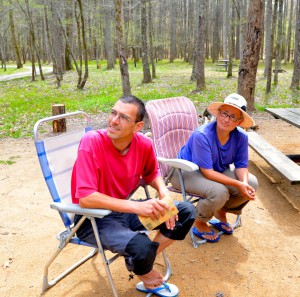
A German couple at Pine Glen Campground appalled to find out fracking may destroy this forest (click on the images for a larger view)
What will happen to visitation and the budget of the parks if potential visitors find out the forest surrounding them is being fracked?
Pete Conroy, director of the Environmental Policy and Information Center at Jacksonville State University, said the destruction of wildlife in the national forest or even the perception of damage could hurt tourism in the area.
“You could imagine the overall impact from bird watching to hiking to mountain biking -– the potential impact to ecotourism is far and wide,” Conroy said. “We’re talking about the potential loss of tens of millions of dollars.”
On a recent camping trip to the area, we ran into a German couple at Pine Glen Campground in early April, and when they heard about the plan for fracking, they were appalled and said they would not choose to visit this area again if that is allowed.
The tourism issue also came up at public meetings organized by citizens when the controversy first erupted last summer.
Gas Fracking Coming to Talladega National Forest?
Jay Worrall of Anniston pointed out the economic argument against allowing drilling in the national forest, in that very few if any local jobs are created — while the area may be polluted to the point where people don’t want to visit anymore. That will cost the local communities money and jobs, and the local and state governments tax revenue. Mt. Cheaha State Park is one of the few profitable state parks in Alabama since Gulf State Park in Gulf Shores lost its convention center to Hurricane Ivan in 2004.
After doing some research on his own, Worrell said he found out most of the jobs don’t benefit the community. It takes very few people to create and then operate a gas well and it is done by small crews that travel all over the country.
“Those jobs aren’t going to benefit us,” he said.
He also pointed out how all the new trucks using the local roads will not only cause traffic and noise, but “it actually tears up the roads” and the corporations will not be paying to fix them.
Worrell emphasized that people come to the national forest and spend money on recreation, including camping, hiking, fishing, boating and other activities.
“They bring people in that eat in our restaurants, stay in the hotels, spend money here,” he said. “Has anyone looked at what the economic impact would be on our community if people didn’t want to come here anymore because when you are standing up there on Bald Rock you are looking down on a bunch of gas wells? We will lose money if this happens.”
To him, it seems like “a bunch of carpetbaggers coming in here and taking a resource that we have from us, liquidating it, going away — and we’re left with the mess.”
Mr. Flanders agrees.
“We are a destination point for eco-tourism,” he said. “If we’ve got to drill for natural gas in the Talladega National Forest, and I don’t think we do, is there any way to keep all of our children and grandchildren’s’ birthright from going to the oil and gas industry? The money is not going to make it worthwhile for us.”
Maps of the Proposed Fracking Zone on Public Land in Alabama
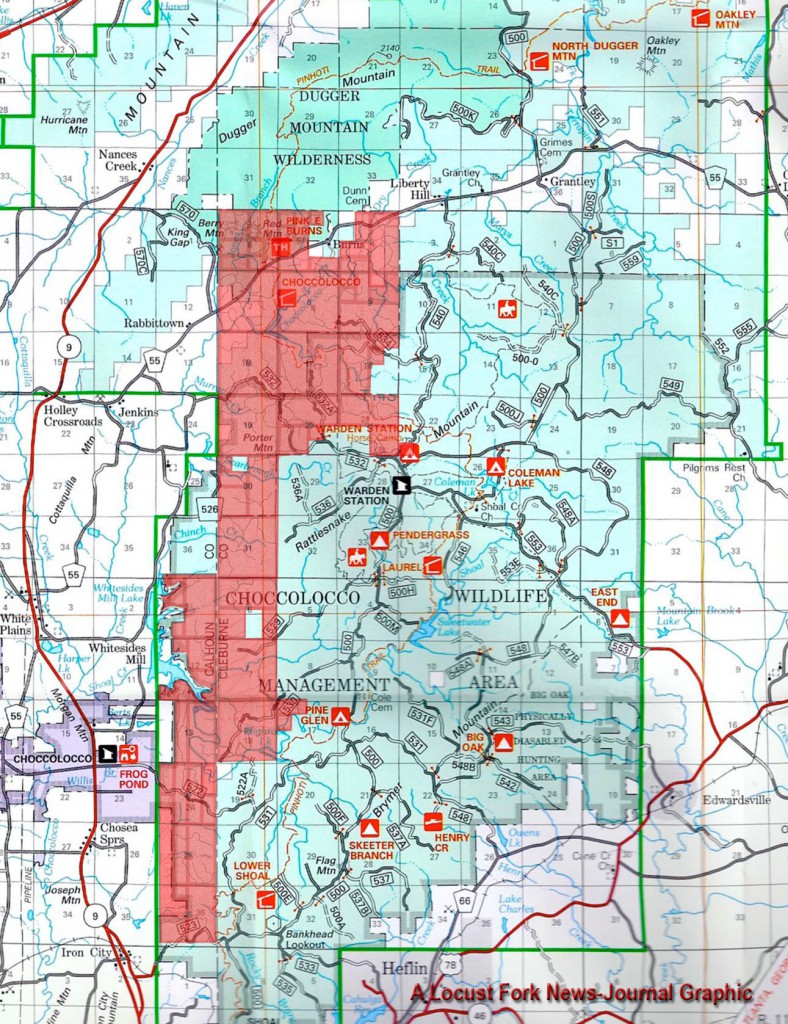
The proposed fracking lease area in the northeast quadrant of the Talladega National Forest, just south of the Dugger Mountain Wilderness area and east of the Coleman Lake Campground and Pine Glen.
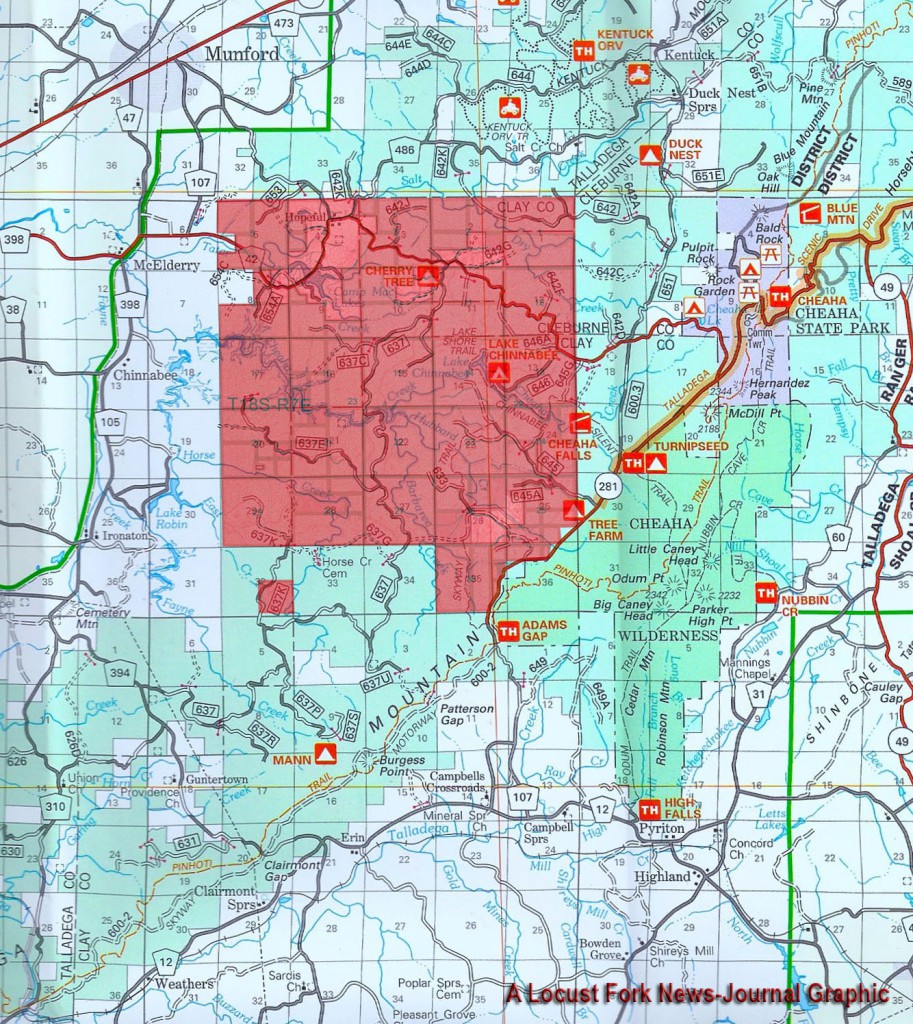
The central quadrant where the fracking leases are most concentrated just down the mountain from Cheaha State Park, taking in and surrounding one of the most beautiful campgrounds and lakes in the state at Lake Chinnabee, a true national treasure managed by the U.S. Forest Service.
Scenes From the Talladega National Forest Before Fracking
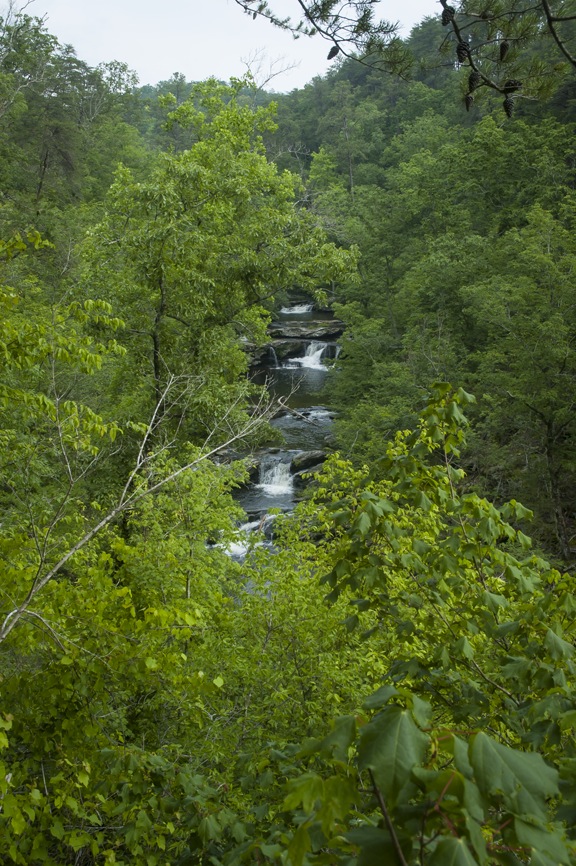
Water falls abound in the Talladega National Forest. Residents worry they could be contaminated if fracking is allowed.
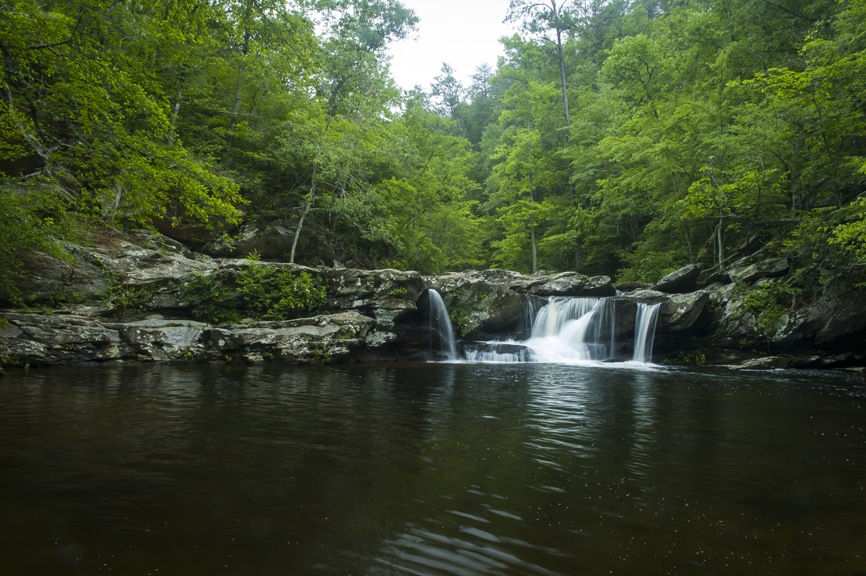
Water falls abound in the Talladega National Forest. Residents worry they could be contaminated if fracking is allowed.
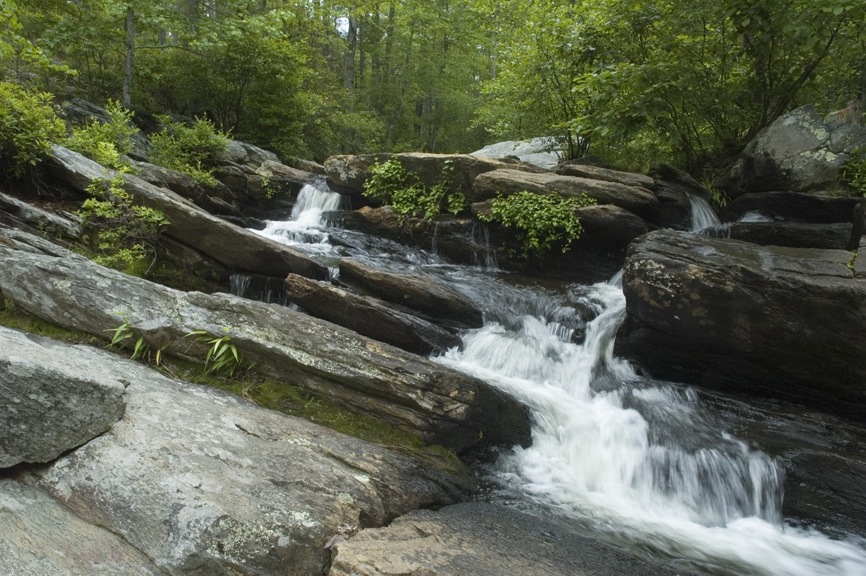
Water falls abound in the Talladega National Forest. Residents worry they could be contaminated if fracking is allowed.
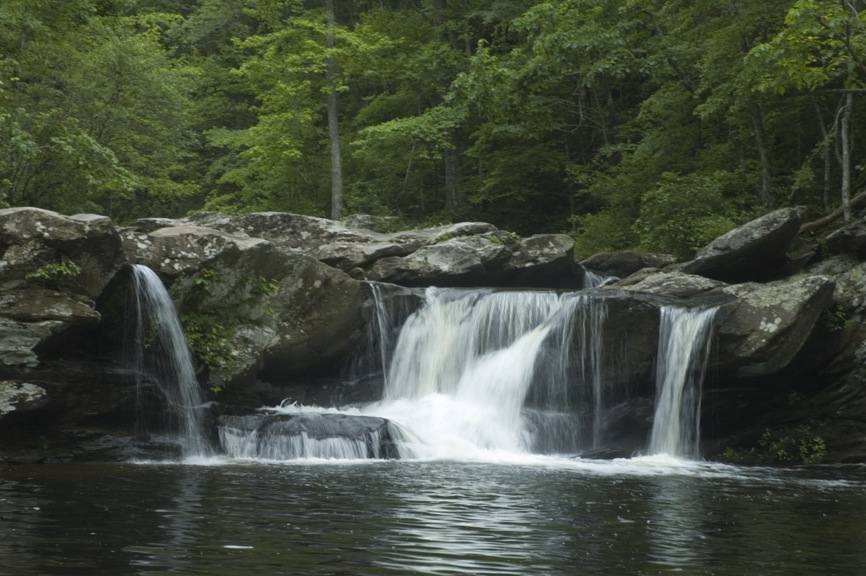
Water falls abound in the Talladega National Forest. Residents worry they could be contaminated if fracking is allowed.
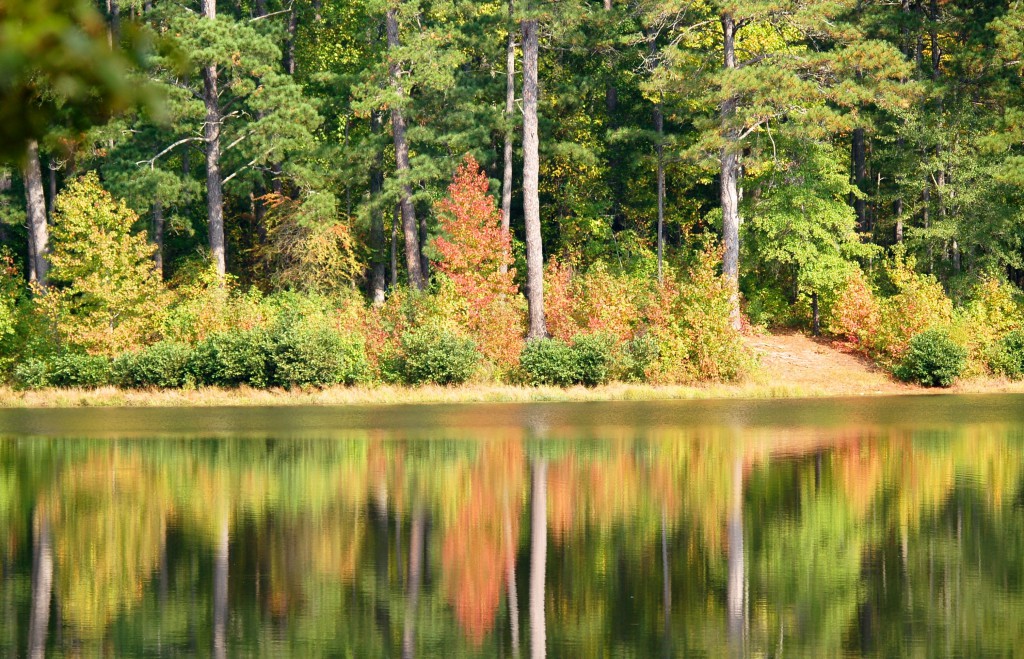
A view of Sweet Water Lake, which could become contaminated by natural gas and drilling chemicals if fracking is allowed.

Near fracking operations across the country, fresh surface water catches fire when methane gas leaks from a fracking site.
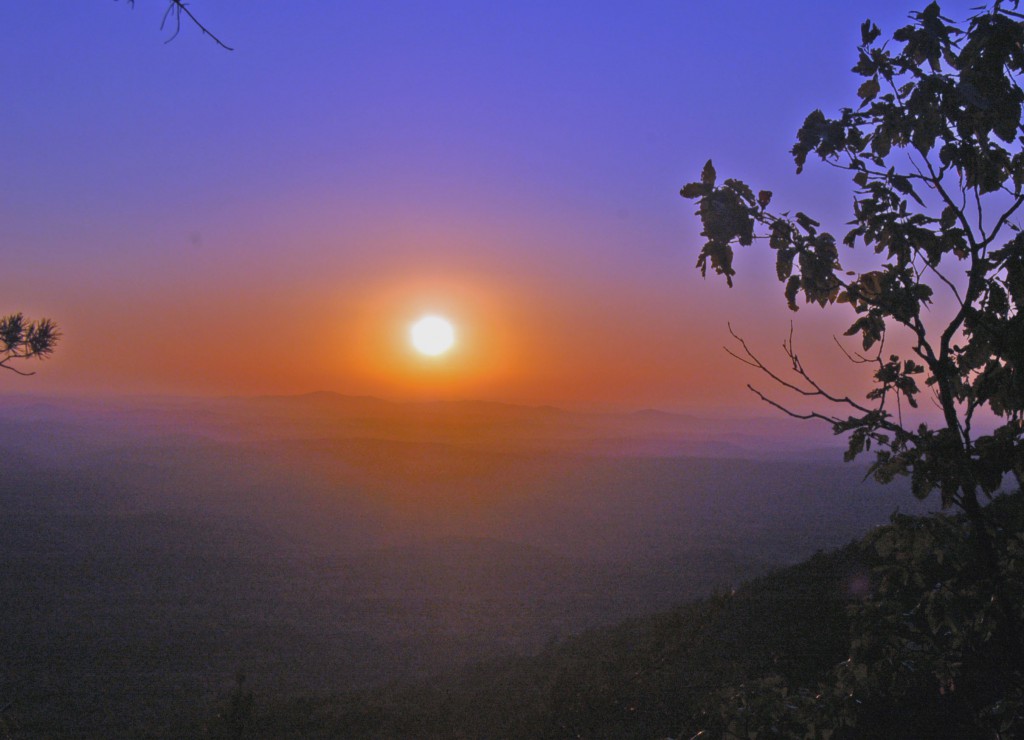
A sunset from Mt. Cheaha. Will tourists still flock to see the place if fracking sites are drilled all over the forest?
Links to More Information
EPA’s Study of Hydraulic Fracturing and Its Potential Impact on Drinking Water Resources
Alternet: Five Strange, Frightening Effects of Fracking
Earth Justice Has Published a Fact Sheet on Fracking.
The Sierra Club has a campaign in progress to move beyond natural gas and takes a strong stand against fracking.


